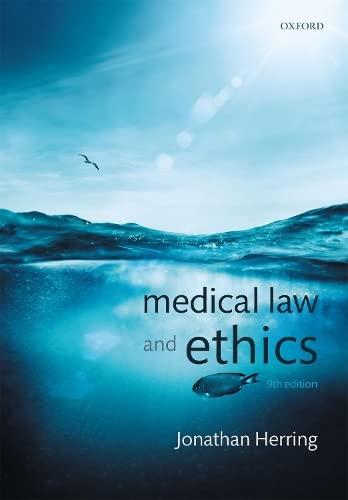Question
Lexmark is a manufacturer of printers and ink cartridges. Lexmark would prefer that its customers return their empty cartridges to it for refurbishment and resale,
Lexmark is a manufacturer of printers and ink cartridges. Lexmark would prefer that its customers return their empty cartridges to it for refurbishment and resale, rather than sell/trade those cartridges to a re-manufacturer for re-filling. To achieve this goal. Lexmark introduced what it called a "Prebate" program, which enabled customers to purchase new toner cartridges at a 20-percent discount if they would agree to return the cartridge to Lexmark once it was empty. Those terms were communicated to consumers through notices printed on the toner-cartridge boxes, which advised the consumer that opening the box would indicate assent to the terms-a commonly practice known as "shrinkwrap, licensing."
To enforce the Prebate terms (and to make it difficult for anyone other than Lexmark to refill the printer-cartridges), Lexmark included a microchip in each Prebate cartridge that would disable the cartridge after it ran out of toner. For the cartridge to be used again in a Lexmark printer, the microchip would have to be replaced by Lexmark after the customer returned the toner-cartridge to Lexmark for re-filling.
Static Control is not itself a manufacturer or re-manufacturer of toner cartridges. It is, rather, "the market leader in making and selling the components necessary to remanufacture Lexmark cartridges." In addition to supplying re-manufacturers with toner and various replacement parts for use in refurbishing Lexmark toner cartridges, Static Control developed a microchip that could mimic the microchip in Lexmark's Prebate. cartridges, thereby circumventing Lexmark's attempt to limit others from refilling the printer-cartridges. By purchasing Static Control's microchips and using them to replace the Lexmark microchip, re-manufacturers were able to refurbish, refill and refill used Prebate, cartridges to owners of Lexmark printers at a reduced rate from that charged by Lexmark. Lexmark did not take kindly to that development. It sued Static Control.
Static Control believes Lexmark, through the specific terms of its Prebate program, "purposefully misleads end-users" to believe that they are legally bound by the Prebate terms and are thus required to return the Prebate-labeled cartridge to Lexmark after a single use instead of purchasing a "re-manufactured" cartridge from one of Static Contol's vendees. Static Control also discovered that, upon introducing the Prebate program, Lexmark "sent letters to most of the companies in the toner cartridge remanufacturing business" falsely advising those companies that it was illegal to sell refurbished Prebate cartridges and, in particular, that it was illegal to use Static Control's products to refurbish those cartridges. Static Control believes that by those statements, Lexmark had materially misrepresented "the nature, characteristics, and qualities" of both its own products and Static Control's products.
1. What claims should Lexmark include in its complaint against Static Control to protect its intellectual property?
2. One re-manufacturer ("Printer Pirate") also makes its own "house brand" cartridges that are identical to Lexmarks cartridges in color, shape and design. This re manufacturer also sells its cartridges (that "fit" Lexmark printers) to other Re manufacturers who fill them (as well as Prebate cartridges) with toner and offers them for sale to the owners of Lexmark printers at a reduced price. What claims should Lexmark make against Printer Pirate?
3. What should Static Control include in its Counterclaim against Lexmark to support its claims that Lexmark acted wrongfully and competed unfairly?
4. How would you resolve the above three claims and why (if you assume additional facts, please set them forth)?
Step by Step Solution
There are 3 Steps involved in it
Step: 1

Get Instant Access to Expert-Tailored Solutions
See step-by-step solutions with expert insights and AI powered tools for academic success
Step: 2

Step: 3

Ace Your Homework with AI
Get the answers you need in no time with our AI-driven, step-by-step assistance
Get Started


